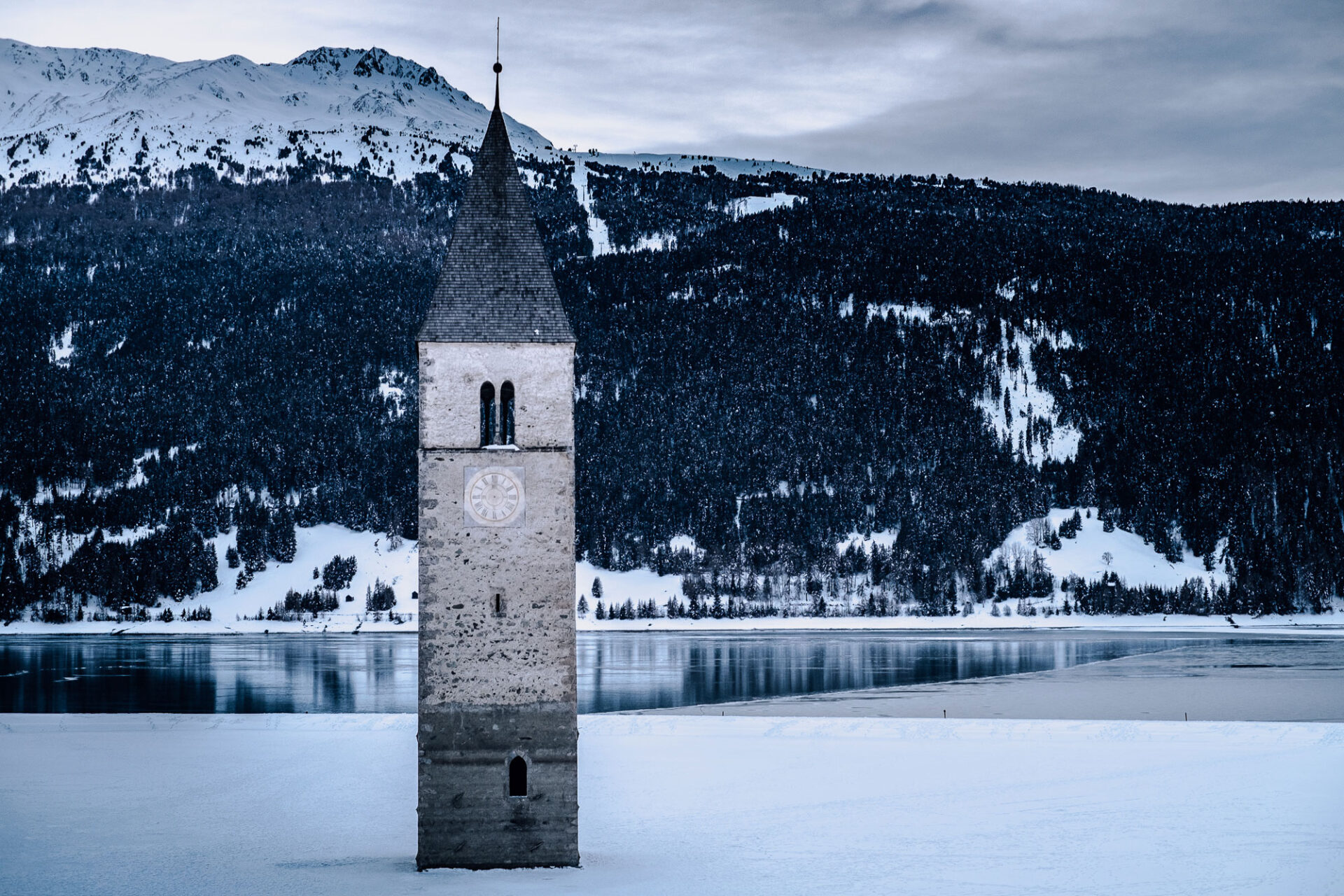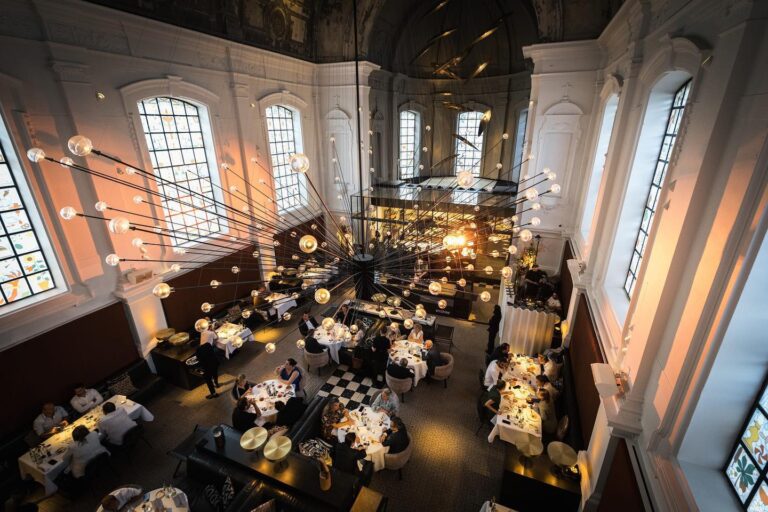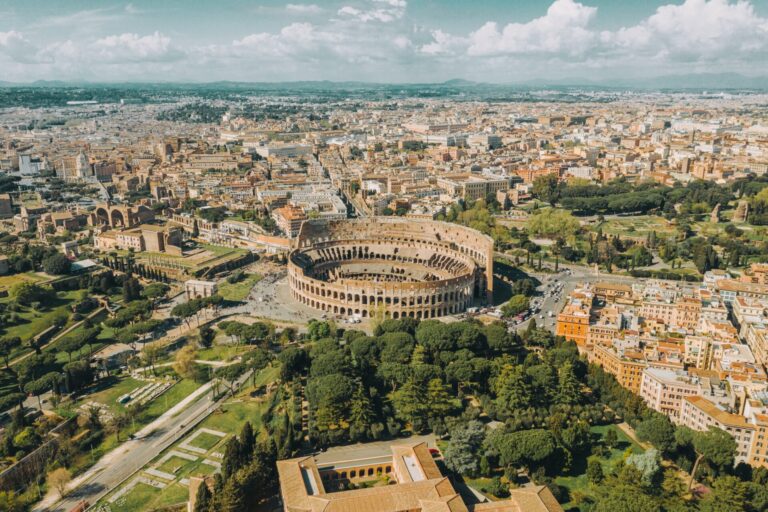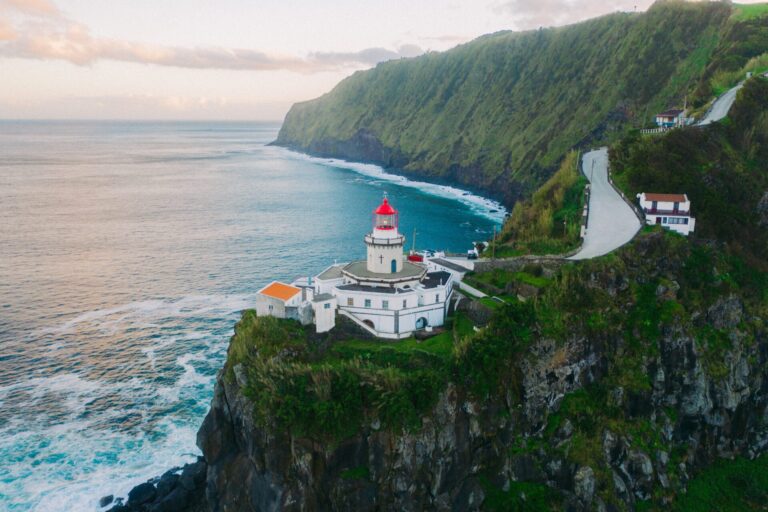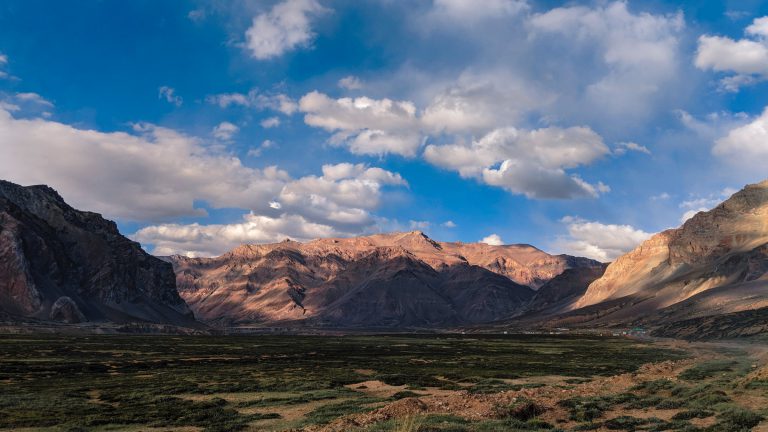Lago di Resia and it’s submerged church
Over the years, Lago di Resia has become the symbol of the Italian Venosta Valley. The reason is that, in the middle of Lago di Resia, you can find a submerged church tower that rises above the water.
Page Contents
The origin of Lago di Resia
In the summer of 1950, the local government built a water reservoir near the Passo di Resia to produce electricity. The construction of this dam submerged the neighboring villages of Curon (Graun in German) and Resia (Reschen in German).
The local population was evicted from their property and forced to settle elsewhere – which for most residents needed to relocate. They rebuilt the village Curon Venosta at a higher location in the valley or moved their homes to a neighboring village.
The 14th-century church Curon was the only building that was not demolished, as it was a recognized historical monument. This is why the top of the church tower rises above the water and is still visible today.
Since then, the submerged Campanile di Curon is known as the symbol of the Italian Venosta Valley. Nowadays, various international travel magazines list it as the top must-see destination in the region.
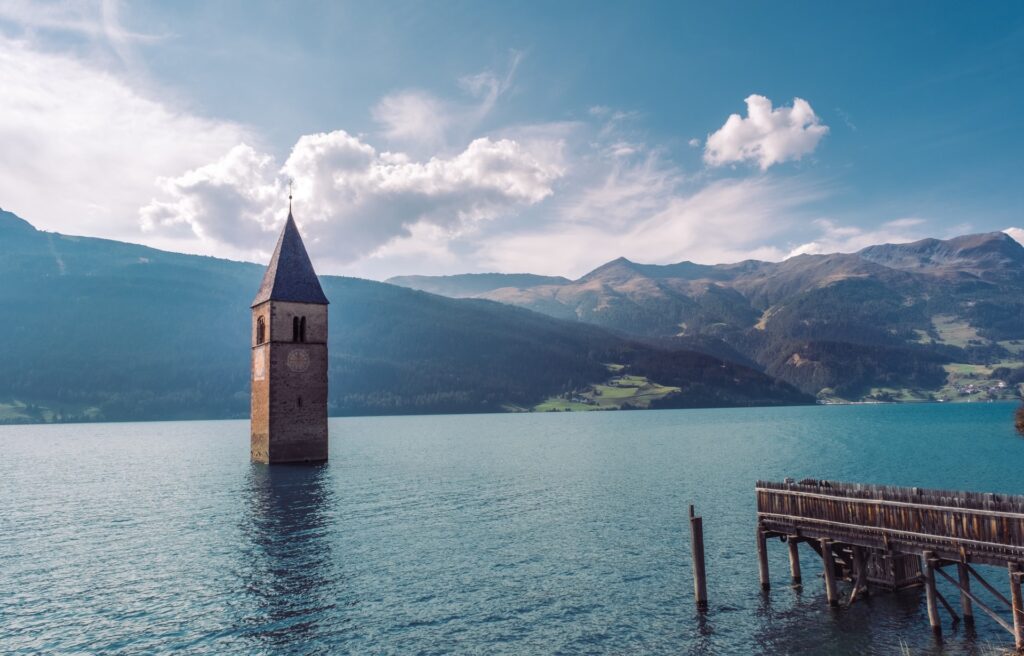
Basic facts about Lago di Resia
The Lago di Resia is located in northern Italy, on the border with Austria and Switzerland. Although the lake is part of Italy, most of the local community speaks German, so the lake is more known under its German names Reschensee or Lake Reschen.
| Region | South Tyrol |
| Altitude | 1,498 meter high |
| Size | 6.6 km2 |
| Depth | 28 meters deep |
| Type | Artificial Lake; submerged after the construction of a dam |
| Names | Lago di Resia, Reschensee, and Lake Reschen. |
| GPS coordinates | 46.801°N, 10.531°E |
The Legend of Lago di Resia and its ringing church bells
When the dam was built in the early ’50s, the neighboring cities Curon and Resia were submerged, creating Lago di Resia. When building the dam, all abandoned houses were demolished. The sole exception was the Campanile di Curon because the church was recognized as a historical monument.
Over the years, the church tower has withstood the the water’s decay, causing the top of the tower to rise from the water. This is the only visible reminder of the drowned city to this day.
During the winter – when the lake freezes – visitors and tourists can walk up to the tower. Some tourists claim they can still hear the bells ring, even though they removed them before the city was flooded.
Netflix Series Curon drives extra tourists to Lago di Resia
Recently, the ancient half-submerged bell-tower received an important role in the drama Netflix series Curon. In this Netflix series, the submerged church is the central location of all the mysteries that spread fear far beyond the village.
Curon tells the story of Anna, a mother of two teenage twins, who returns home to the village Curon after 17 years with her teenage twins. After arriving in Curon, she mysteriously disappears, and her teenage children start searching for her, only to discover the sketchy family history.
The Curon series contained 7 episodes and was launched in 190 countries via Netflix on the 10th of June 2020. Its popularity made the series reach many people, which boosted the Lake’s popularity to the tourists.
How to reach Lago di Resia in 2021
Lago di Resia is located on the Passo Resia mountain pass, which connects Austria to Northern Italy.
The lake borders the main road of the Venosta valley and anticipates tourists visiting: There is a parking lot for visitors, a viewing platform for photographers, and a 4-hour walking route that guides tourists around the lake.
| By car | If you’re driving from Austria, you have to look to the side of the road until you see the church rising from the water. Visitors from Switzerland will have to detour via Austria because there is only one mountain pass: Passo Resia. Visitors coming from Italy should follow the winding roads to the lake and stay on the main road until they see the “Campanile di Curon” church tower. |
| By Train | There is a train that runs through the Venosta Valley. Make sure you get off at the Malles-Mals stop and then take the 273 bus to the Lago di Resia. |
| By Bus | Bus 273 takes you to the lake, but make sure to get off at the Graun-Curon stop, just after the St Valentine bus stop. The Graun-Curon bus stop is located just in front of the submerged church, so you should keep an eye on the area not to miss your stop. |
When should you visit Lago di Resia?
Lago di Resia attracts tourists all year round, in summer it is mainly known for water sports, in winter for snow sports.
Watersports during summer
Lago di Resia is a popular tourist location during summer, with various attractions and excursions for tourists – from tourists who come for sightseeing to sports enthusiasts who enjoy walking, Nordic walking, jogging, or cycling around the lake.
Because the lake is located in a valley, the weather conditions make it a perfect destination for kite surfers or a boat trip.
Skiing during winter
Due to its altitude, Lago di Resia freezes during the winter, making it possible to walk up to the tower. Many tourists try this to discover whether the bell really rings.
The lake is located about 5 kilometers from the ski slope Belpiano, which is a popular attraction in winter.
What to do at Lago di Resia
The accommodations and hospitality around Lago di Resia are fully aimed at tourists, making it a beautiful holiday destination: It has a 15 km walking route around the lake, but it is also equipped with camper parking areas.
The local community has done everything to make Lago di Resia even more attractive by creating additional activities around the lake such as hiking on the surrounding mountains, fishing, and kite-surfing in the lake.
We’ve listed the most common activities:
- Running: Lago di Resia has a 15 km walking route around the lake and annually hosts the largest running event in South Tyrol, which attracts several Runners, hand bikers, and Nordic walkers.
- Cycling: The Via Claudia Augusta is an ancient Roman road linking the Po River valley with Rhaetia across the Alps. This road is quite popular with cycling tourists because it stretches to Meran (+ – 25km).
- Mountaineering: The mountains behind the lake offer endless options for hiking!
- Skiing: The lake is located about 5 kilometers from the ski slope Belpiano, which is a popular attraction in winter.
- Kite Surfing: The valley creates strong winds, making it perfect for kite surfing in the summer.
Other attractions near Lago di Resia
We visited Lago di Resia as the last stop on our road trip around the Dolomites. We discovered during our drive through the winding roads of the Venosta valley that the region has several interesting tourist attractions: from medieval castles to various WWI memorial sites.
Here is what you should visit when you are in the neighborhood:
- Valliereck Pilgrimage Church. This church is located directly next to Lago di Resia and dates back to 1886.
- The Church of St. Anna. A gothic church located on a hill. The church offers a magnificent view of Lago di Resia and contains various old relics.
- The St. Nicholas Church in Rojen. The church houses various fresco mural paintings dating back to the 15th-century.
- The St. Benedict Church in Mals. A pre-Romanesque church, mostly known for its 8th-century Carolingian frescoes.
- Marienberg Abbey in Mals. A Benedictine abbey happens to be the highest located abbey in Europe. It was built in a Baroque style in 780 and still contains well-maintained frescos.
- The Historic town of Glurns. The town is now called Glorenza, known as the smallest city in Europe surrounded by ring walls. It still contains its medieval city center and gate towers.
- Roman St. Sisinius Church in Laa. A Romanesque church containing a rare choir tower. Old skeleton and clay fragments from the Bronze Age were found here, which proved it was a church in the 13th century.
- Kastellbell Castle. The castle was built in the 13th century. It currently acts as the cultural center of the village, containing a few permanent art exhibitions.
- The Stelvio Pass. One of the highest mountain passes in Europe. It is ranked among the best driving roads in the world. The Giro d’Italia is known for often crossing the Stelvio Pass.
What to pack when visiting Lago di Resia
Heading out for a day hike when you visit Lago di Resia is a delightful way to explore nature. Just remember: the longer and the more remote your hike is, the more you’ll need to prepare. That’s why we listed some of the essentials to pack before you head out to Lago di Resia.
| Hiking shoes | You will most likely hike several kilometers, which makes good footwear a necessity. |
| LARQ Bottle | We personally have invested in a LARQ water bottle, which we bring to all our hikes. It contains a UV-C Light technology that neutralizes many harmful bacteria and contributes to our zero-waste lifestyle. |
| Sun protection | Don’t forget to bring your sunscreen and sunglasses because it can get quite warm in the summer. |
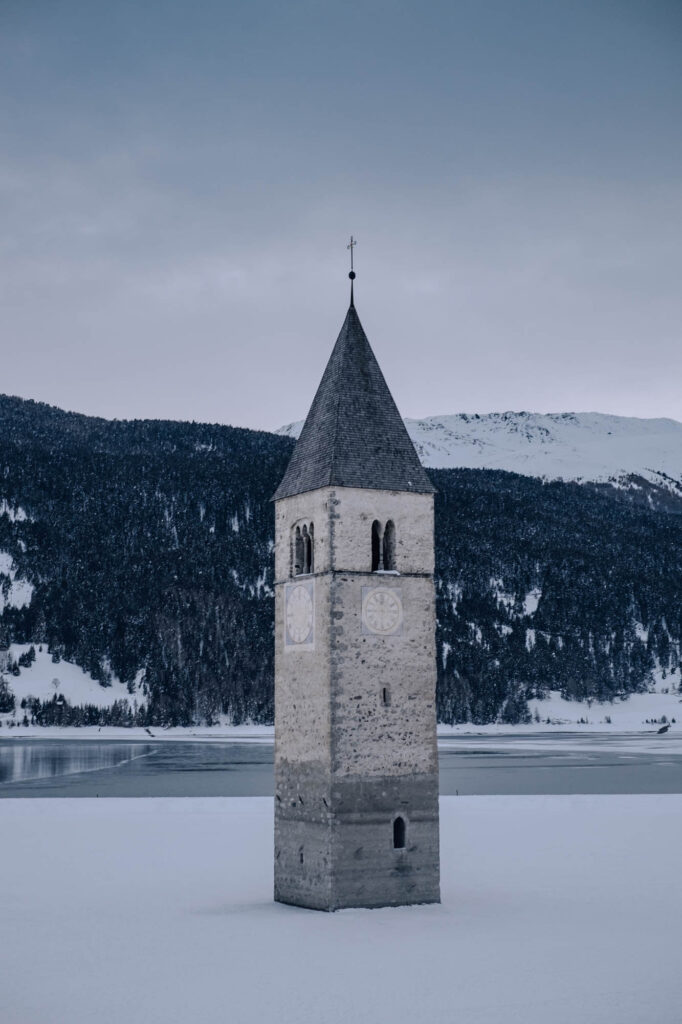
Photographing Campanile di Curon
Even before the Netflix series Curon aired, the 14th-century submerged Campanile di Curon was a tourist attraction, especially popular with photographers. As a result, several photos of the landmark already exist, making it slightly more difficult to create unique content.
Drone rules
The lake is not marked as a no-fly zone, so as long as you respect the new and local 2021 drone rules, you can fly here. We included a short drone video above the lake below as a muse for your inspiration.
Since 31st December 2020, new European Drone Regulations have been in effect. Read our summary of these EU drone regulations to understand how it impacts you and your drone.
Camera gear
As an experienced and published photographer, my camera bag grew throughout the years. It currently contains various cameras and lenses, each with its function and use – We’ve listed all of them below.
| GEAR | DETAILS |
|---|---|
| Fujifilm X-E2 | The Fujifilm X-E2 has been my go-to camera for years and is the camera I used for shooting the photos of Lago di Resia. |
| Fujifilm X-T30 | The Fujifilm X-T30 is my favorite camera for making video content, which I mainly used at Lago di Resia for B-roll footage and background videos. |
| Fujifilm X100F | Whenever I walk around a city, I use my X100F. The reason is that the camera is so compact this it forces me to be more creative because of its fixed lens. |
| Fujifilm 35mm F1.4 lens | My all-time favorite lens. I always have it mounted on my X-E2 camera. I have a polarizing filter screwed on as standard, which captures the sky more beautifully. |
| Fujifilm 18-55mm F2.8-4 lens | The 18-55m is the regular FujiFilm kit lens, perfect for creating video content. |
| Huawei P30 Pro Smartphone | When there is no time to open my camera bag, I use my P30 Pro. It can save RAW photos, making it easy to edit photos instantly in the Lightroom app. |
| Yuneec Mantis G | Whenever I am allowed to fly, I send my Yuneec Mantis G drone into the sky. The drone has a 30-minute battery, which makes it perfect for road trips! |
This guide on Fujifilm lenses for traveling provides a comprehensive overview of some of the best options available, including wide-angle and zoom lenses, to help you capture stunning photos of your travels.
Camera settings
For aspiring photographers, landscape photography might seem like black magic. This is why we decided to break down the technical details behind this shot.
| Settings | Value |
|---|---|
| ISO | 200 |
| Aperture | f/2.8 |
| Shutter Speed | 1/30 |
Post-production Software
Post-production is the process of editing your picture in software such as Lightroom and Photoshop. This process helps you to improve the quality of your photos drastically. To show you how powerful Lightroom Mobile is, we edited a picture taken with our Huawei P30 Pro Smartphone via their mobile app. Enjoy!
Save it for later …





